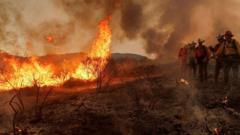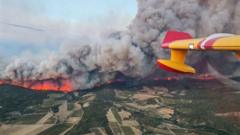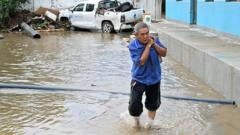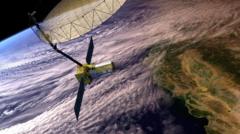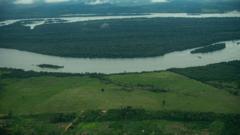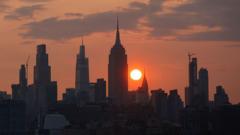A climate-driven marine heatwave has led to unprecedented coral bleaching across 1,500 km of Western Australia's reefs, impacting previously resilient areas. Experts warn that climate change is exacerbating the threat to global coral ecosystems, as recovery times lengthen.
Unprecedented Coral Bleaching Strikes Western Australian Reefs
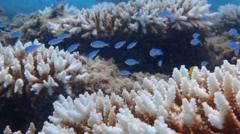
Unprecedented Coral Bleaching Strikes Western Australian Reefs
The worst recorded bleaching event has devastated coral reefs in Western Australia due to prolonged marine heatwaves, signaling urgent climate action.
World-renowned coral reefs along Western Australia's coast have recently experienced a catastrophic bleaching event, described by scientists as the "worst on record". This alarming phenomenon followed the state’s "longest, largest, and most intense" marine heatwave, spanning from August of last year to May this year. Elevated water temperatures subjected the reefs to severe heat stress, prompting the coral to expel their symbiotic algae—responsible for their vibrancy and life—in a process known as bleaching, which significantly threatens their survival.
The assessment of this widespread damage, which stretches over 1,500 kilometers (932 miles) and includes previously unaffected areas, will require months to complete. The ongoing global coral bleaching crisis, exacerbated by record-high ocean temperatures, has persisted for two years, with recent reports indicating that up to eight weeks of heat stress can be lethal for coral populations. Initial evaluations from Australia’s marine science agency suggest that many reefs in Western Australia experienced bleaching rates ranging from 15% to 30%.
James Gilmour, a researcher from the Australian Institute of Marine Science (AIMS), emphasized the unprecedented length and intensity of heat stress affecting the reefs, revealing, "The footprint across multiple regions is something we've never seen before." AIMS' latest findings concluded that the 2024-25 season marks the "most severe coral bleaching on record" within both the northwestern and central reef sectors of the state.
Notably, areas that had previously offered hope due to minimal historical bleaching—such as the Rowley Shoals, north Kimberley, and Ningaloo Reef—have now been significantly impacted. Ningaloo Reef is recognized as a World Heritage site, paralleling the Great Barrier Reef on Australia's east coast, which has also faced severe coral loss in recent years. Following a recent report, it was revealed that the Great Barrier Reef has recorded its most substantial decline in coral in nearly four decades.
Murray Watt, Australia’s Federal Environment Minister, expressed the urgency for immediate action, stating that the damage to Ningaloo reinforces the necessity for both Australia and the global community to strive towards net-zero emissions. Dr. Gilmore noted that as climate change escalates the frequency, intensity, and breadth of bleaching events, coral reefs—requiring 10 to 15 years to regenerate—face diminishing opportunities to recover.
The United Nations has previously cautioned that even efforts to restrict global temperature increases to 1.5 degrees Celsius above pre-industrial levels could result in the demise of 70% to 90% of the world's tropical coral reefs.


